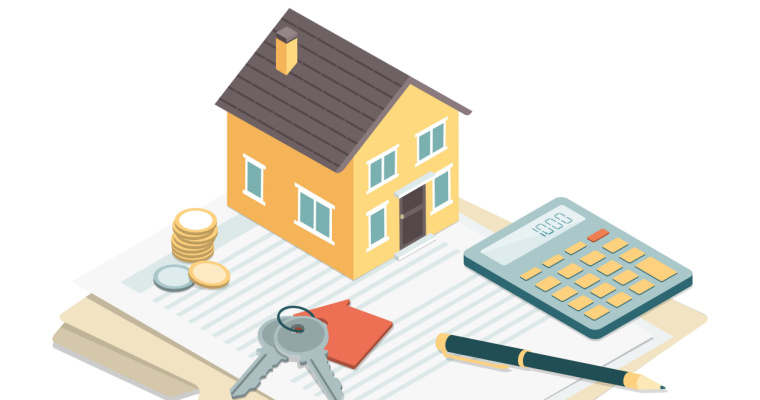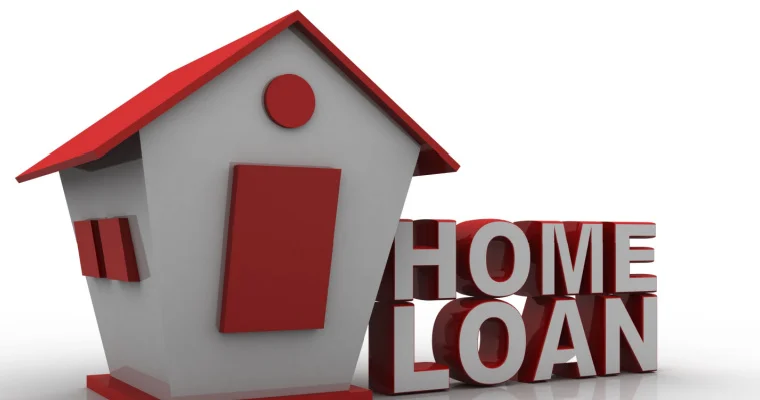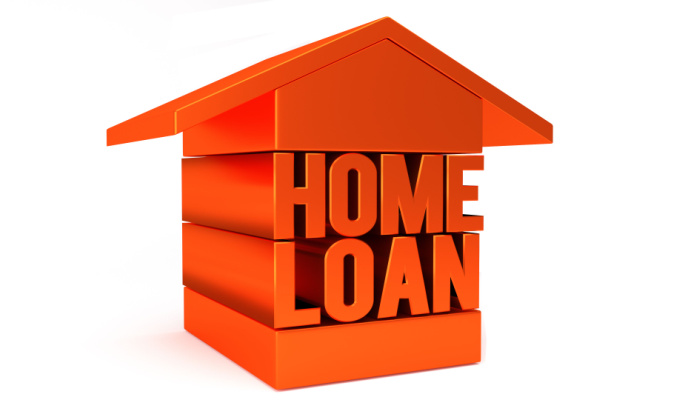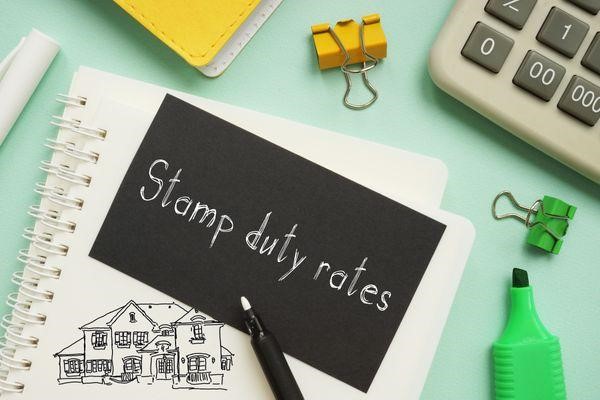Union Bank of India Home Loan Interest Rate April 2023

Union Bank of India offers up to 90% of the property value as home loan. Union Bank home loan interest rate starts from 9%* p.a., subject to the loan tenure, the purpose of the loan and CIBIL score of the applicant.
Union Bank home loans come with a tenure of up to 30 years; the bank sanctions up to 80% of the property value for loans above ₹30 lakh and 90% of the property value for loans below ₹30 lakh. There is no specific limit till which you can get a housing loan as the amount solely depends on your repayment capacity.
In the following sections of the article, we will give you a comprehensive idea about the housing loan interest rates in Union Bank of India and its related details.
Union Bank Home Loan Interest Rates 2023 Highlights
| Different Home Loan Schemes | Interest rate |
| Union Home / Awas | 9% p.a. onwards |
| Union Home-Smart Save | 9.35% p.a. onwards |
Concession: A benefit of 5 bps will be applicable for female applicants, only if the house is jointly or singly owned.
Note
The Union Bank of India home loan interest subsidy scheme is applicable for borrowers under Pradhan Mantri Awas Yojna at the rate of 6.5%.
Union Bank Home Loan Interest Rate Calculator
Calculating your home loan EMIs before taking a loan is extremely important to assess the loan affordability. To calculate your Union Bank home loan EMI, the most convenient option is to use an online home loan EMI calculator.
Calculate Your Union Bank Home Loan EMI
Loan Amount
Rate of Interest (P.a)
%
Loan Tenure (Years)
Years
Monthly EMI
0
Total Interest
Total Amount
The loan EMI calculator is extremely easy to use and gives you quick and accurate results. Select the loan amount, the tenure of the loan, and the current interest rate, the online home loan calculator will give you an estimate of the EMI.
To give you a complete picture of your financial obligations, the EMI calculator will show you how much your loan repayment will cost as well as your payment schedule. Keep in mind that Flexi-rate home loans may have interest rates that fluctuate over time. However, you don’t have to worry about this since the calculator will consider a fixed rate of interest for the entire tenure of the loan.
Following is an example to show you how the current home loan interest rate of Union Bank India will affect your EMI on a specific principal amount.
Applying for a home loan of ₹30,00,000 at the rate of 9.00% and a tenure of 10 years will result in a monthly EMI of ₹38,003. The total interest payable in this tenure is ₹15,60,328, and at the end of 10 years, the total amount you will pay including interest is ₹45,60,328.
Also Read
Factors that Affect Union Bank Home Loan Interest Rate
Here are some of the factors that
1. External Benchmark Based Lending Rate (EBLR)
EBLR is an externally-linked interest rate system that is now the only benchmark for new flexi-rate home loans offered by various public banks. As of February 11, 2023, the EBLR of Union Bank of India is 9.30%. All the interest rates charged on different loans depend on this rate.
2. Marginal Cost of Funds Based Lending Rate (MCLR)
The benchmark interest rate used by Indian banks to determine lending rates for various loans, including home loans, is the Marginal Cost of Funds-Based Lending Rate (MCLR). As a borrower, you must keep an eye on the MCLR to stay informed of any changes that may affect the interest rate of your home loan.
Here are the current Union Bank MCLR rates applicable from 11th April 2023 to 10th May 2023.
| Types | Proposed MCLR |
| Overnight MCLR | 7.90% |
| 1 Month MCLR | 8.05% |
| 3 Months MCLR | 8.25% |
| 6 Months MCLR | 8.45% |
| 1 Year MCLR | 8.65% |
| 2 Year MCLR | 8.85% |
| 3 Year MCLR | 9.00% |
Note
The Base rate w.e.f 1st April 2023 is 9.80%, and the EBLR w.e.f 11th February 2023 is 9.30%.
3. CIBIL Score
The CIBIL score of the loan applicant, which reflects his/her creditworthiness and track record of loan repayment, is a significant factor in determining the applicable interest rate. If the CIBIL score is high (or close to the maximum score of 900), the likelihood of obtaining loans at lower interest rates increases. Here is a list showing how your CIBIL score increases or decreases the home loan interest rates offered by UBI.
| Loan Amount | CIBIL Score | Male | Female |
| Up to 30 Lakh | 800 and above | EBLR – 0.30% = 9.00% | EBLR – 0.30% = 9.00% |
| From 750 to 799 | EBLR – 0.20% = 9.10% | EBLR – 0.20% = 9.10% | |
| From 700 to 749 & -1 & 1 to 5 | EBLR + 0.05% = 9.35% | EBLR = 9.30% | |
| EBLR + 0.10% = 9.40% | EBLR + 0.05% = 9.35% | ||
| From 650 to 699 | EBLR + 0.15% = 9.45% | EBLR + 0.10% = 9.40% | |
| EBLR + 0.20% = 9.50% | EBLR + 0.15% = 9.45% | ||
| From 600 to 649 | EBLR + 0.70% = 10.00% | EBLR + 0.70% = 10.00% | |
| Below 600 | EBLR + 1.20% = 10.50% | EBLR + 1.20% = 10.50% | |
| Above 30 Lakh | 800 and above | EBLR – 0.30% = 9.00% | EBLR – 0.30% = 9.00% |
| From 750 to 799 | EBLR – 0.20% = 9.10% | EBLR – 0.20% = 9.10% | |
| From 700 to 749 & -1 & 1 to 5 | EBLR + 0.15% = 9.45% | EBLR + 0.10% = 9.40% | |
| EBLR + 0.20% = 9.50% | EBLR + 0.15% = 9.45% | ||
| From 650 to 699 | EBLR + 0.25% = 9.55% | EBLR + 0.20% = 9.50% | |
| EBLR + 0.30% = 9.60% | EBLR + 0.25% = 9.55% | ||
| From 600 to 649 | EBLR + 0.85% = 10.15% | EBLR + 0.85% = 10.15% | |
| Below 600 | EBLR + 1.40% = 10.70% | EBLR + 1.40% = 10.70% |
4. Loan-to-Value Ratio (LTV)
LTV denotes the proportion of the loan amount to the appraised value of the property. This ratio plays a crucial role when it comes to determining the interest rate offered to borrowers. For example, if you are offered a loan amount of ₹90 lakh for a ₹1 crore property, it means that the LTV ratio is 90%. A higher LTV generally results in a higher interest rate and vice versa.
Here are the current LTV norms followed by Union Bank for implementing home loan interest rates:
| Loan Amount | Maximum Permissible LTV |
| Up to ₹30 Lakh | 90% |
| > ₹30 Lakh <= ₹75 Lakh | 80% |
| > ₹75 Lakh | 75% |
5. Loan Amount
The amount of loan that you are applying for is also a key factor that determines the interest rate applicable and chances of approval. A lower loan amount can result in a lower interest rate, as well as quick approval and vice versa.
6. Loan Tenure
The interest rate applicable on the home loan will largely depend on the loan tenure. Union Bank of India provides a lower interest rate to home loans taken for short tenure than the ones taken for long periods.
7. Income
Your monthly income is a crucial factor in determining the eligibility for a home loan and the interest rate applicable. Having multiple earning members in the immediate family or having several income sources increases the monthly household income, which increases the chances of getting a home loan at attractive terms.
8. Gender
UBI housing loan interest rate applicable for women borrowers is different from that of men. An interest benefit of 5 bps applies to female applicants if the house is jointly or singly owned by them.
9. Property Location
The location of your chosen property, whether it is an urban city or a small town, may also affect loan eligibility and interest rates. Based on your eligibility, you may be able to obtain a higher loan amount for a property in a big city.
Union Bank Home Loan Interest Rate and Benefits for Women
The Union Bank of India offers special interest rates on home loans to women applicants. A concession of 5 bps is offered to female borrowers for singly/jointly owned properties. The applicable interest rate as per credit score for women borrowers is stated below:
| Loan Amount | Credit Score | Salaried | Non-Salaried |
Up to 30 lakh | 800 and above | EBLR – 0.30% = 9.00% | |
| From 750 to 799 | EBLR – 0.20% = 9.10% | ||
| From 700 to 749 | EBLR = 9.30% | EBLR + 0.05% = 9.35% | |
| From 650 to 699 | EBLR + 0.10% = 9.40% | EBLR + 0.15% = 9.45% | |
| From 600 to 649 | EBLR + 0.70% = 10.00% | ||
| Below 600 | EBLR + 1.20% = 10.50% | ||
Above 30 lakh | 800 and above | EBLR – 0.30% = 9.00% | |
| From 750 to 799 | EBLR – 0.20% = 9.10% | ||
| From 700 to 749 | EBLR + 0.10% = 9.40% | EBLR + 0.15% = 9.45% | |
| From 650 to 699 | EBLR + 0.20% = 9.50% | EBLR + 0.25% = 9.55% | |
| From 600 to 649 | EBLR + 0.85% = 10.15% | ||
| Below 600 | EBLR + 1.40% = 10.70% | ||
Union Bank Home Loan Interest Rate for NRIs
Union Bank offers NRI customers, whether salaried or self-employed, attractive interest rates on home loans. Changes in the CIBIL score of NRI applicants will change the offered interest rates as well.
| Type of residents | Non Resident Indians (NRIs) |
| Age | 18 to 75 years |
| Loan Tenure | Up to 30 years |
| Interest Rate | 9% p.a. onwards (based on loan amount and credit score) |
| Other benefits | Interest rate and processing fee charged same as Indian residentsNo prepayment penaltyNo limit on loan quantumConcessional rates for women borrowers |
Union Bank Home Loan Interest Rate for Salaried
For salaried individuals, the home loan interest rate differs based on both the credit score and the LTV ratio. The Union Bank home loan interest rates based on the credit score and loan amount have been discussed below:
| Loan Amount | Credit Score | LTV | Salaried |
Up to 30 lakh | 800 and above | <=80 | EBLR – 0.30% = 9.00% |
| >80 & <=90 | |||
| From 750 to 799 | <=80 | EBLR – 0.20% = 9.10% | |
| >80 & <=90 | |||
| From 700 to 749& -1 & 1 to 5 | <=80 | EBLR + 0.05% = 9.35% | |
| >80 & <=90 | EBLR + 0.10% = 9.40% | ||
| From 650 to 699 | <=80 | EBLR + 0.15% = 9.45% | |
| >80 & <=90 | EBLR + 0.20% = 9.50% | ||
| From 600 to 649 | <=80 | EBLR + 0.70% = 10.00% | |
| >80 & <=90 | |||
| Below 600 | <=80 | EBLR + 1.20% = 10.50% | |
| >80 & <=90 | |||
Above 30 lakh | 800 and above | <=80 | EBLR – 0.30% = 9.00% |
| >80 & <=90 | |||
| From 750 to 799 | <=80 | EBLR – 0.20% = 9.10% | |
| >80 & <=90 | |||
| From 700 to 749& -1 & 1 to 5 | <=80 | EBLR + 0.15% = 9.45% | |
| >80 & <=90 | EBLR + 0.20% = 9.50% | ||
| From 650 to 699 | <=80 | EBLR + 0.25% = 9.55% | |
| >80 & <=90 | EBLR + 0.30% = 9.60% | ||
| From 600 to 649 | <=80 | EBLR + 0.85% = 10.15% | |
| >80 & <=90 | |||
| Below 600 | <=80 | EBLR + 1.40% = 10.70% | |
| >80 & <=90 |
Union Bank Home Loan Interest Rate for Self Employed
Similarly, for self-employed individuals, the home loan interest rate differs based on the credit score and the LTV. The interest rates offered to self-employed borrowers are as follows:
| Loan Amount | Credit Score | LTV | Non -Salaried |
Up to 30 lakh | 800 and above | <=80 | EBLR – 0.30% = 9.00% |
| >80 & <=90 | |||
| From 750 to 799 | <=80 | EBLR – 0.20% = 9.10% | |
| >80 & <=90 | |||
| From 700 to 749& -1 & 1 to 5 | <=80 | EBLR + 0.10% = 9.40% | |
| >80 & <=90 | EBLR + 0.15% = 9.45% | ||
| From 650 to 699 | <=80 | EBLR + 0.20% = 9.50% | |
| >80 & <=90 | EBLR + 0.25% = 9.55% | ||
| From 600 to 649 | <=80 | EBLR + 0.70% = 10.00% | |
| >80 & <=90 | |||
| Below 600 | <=80 | EBLR + 1.20% = 10.50% | |
| >80 & <=90 | |||
Above 30 lakh | 800 and above | <=80 | EBLR – 0.30% = 9.00% |
| >80 & <=90 | |||
| From 750 to 799 | <=80 | EBLR – 0.20% = 9.10% | |
| >80 & <=90 | |||
| From 700 to 749& -1 & 1 to 5 | <=80 | EBLR + 0.20% = 9.50% | |
| >80 & <=90 | EBLR + 0.25% = 9.55% | ||
| From 650 to 699 | <=80 | EBLR + 0.30% = 9.60% | |
| >80 & <=90 | EBLR + 0.35% = 9.65% | ||
| From 600 to 649 | <=80 | EBLR + 0.85% = 10.15% | |
| >80 & <=90 | |||
| Below 600 | <=80 | EBLR + 1.40% = 10.70% | |
| >80 & <=90 |
Union Bank Home Loan Interest Rate Comparison with Other Banks
Even though the Union Bank of India housing loan interest rate is quite lucrative, the home loan market in India is filled with competitive offers from other financial institutions and banks. This table will give you a detailed comparison of the same.
| Banks | Home Loan Interest Rate (p.a.) |
| Union Bank of India | 9.00% – 10.70% |
| IDFC FIRST Bank Home Loan | 8.85% onwards |
| SBI Home Loan | 9.15% – 10.05% |
| Punjab National Bank home loan | 8.50% – 10.85% |
| Indian Overseas Bank | 9.55% onwards |
| HDFC Bank home loan | 8.45% – 9.85% |
| IDBI Bank | 9.10% to 12.25% |
| ICICI Bank home loan | 9.00% – 10.05% |
| Bank of Baroda | 9.15% to 10.60% |
| Axis Bank | 8.75% to 9.15% |
Also Read
Features and Benefits of Union Bank Home Loan
Here are some of the features and benefits of Union Bank Home Loan:
1. No Upper Limit
A crucial benefit you can get as a borrower of UBI’s home loan is that there is no upper limit on the loan amount. If you have an excellent credit score and fulfil all eligibility criteria, then you can get the maximum loan amount as per your requirement.
2. Long Tenure
Union Bank home loan interest rate also depends on the tenure of the home loan. Nonetheless, based on your financial goals, you can avail a home loan for a long tenure (maximum 30 years) and decrease the applicable interest rate.
3. Take-over Facility
You can avail the feature of balance transfer on your UBI home loan and vice versa. Nonetheless, a take-over penalty of 2% is charged if the loan is taken over by other banks from UBI.
4. Different Repayment Methods
Union Bank offers you different repayment options for your loan. It includes EMI, equated quarterly instalment (EQI), balloon repayment method, step-up repayment method, bullet payment, and flexible loan instalment pan (FLIP) method.
5. Guarantor
Indian resident home loan applicants do not need to provide any third-party guarantor to avail UBI home loans. However, NRI applicants have to produce one or two guarantors, depending on the loan amount applied for.
Different Types of Home Loans Offered by Union Bank
UBI presents its customers with three different types of home loans based on their eligibility criteria, purpose and loan amount. They are as follows:
1. Union Home Loan
You can avail this standard type of home loan to buy a new house or old dwelling unit. You can also use this loan for the construction of a flat or house along with purchasing a plot for construction. Also, renovation, repair, addition and extension facilities can be availed with this type of loan.
- Type of applicant: Indian citizens and NRIs
- Interest rate: 9.00% onwards
- Eligibility: Must be between the ages of 18 and 75 years
- Loan tenure: Maximum 30 years
- Loan amount: No upper limit
- CIBIL score: 600 and above (applicants with no CIBIL score are also eligible)
- Processing fees: 0.50% of the loan amount to a maximum of ₹15,000 + GST
2. Union Home-Smart Save
This scheme aims to provide you with an overdraft facility to construct or buy a house or flat. The amount of the loan sanctioned depends on the applicant’s eligibility. Any additional repaid amount over and above the scheduled repayments will reduce the outstanding loan amount and the applicable interest burden.
- Type of applicant: Indian citizens and NRIs
- Interest rate: 9.35% onwards
- Eligibility: Must be between the ages of 18 and 75 years. Additional documents of letter of continuity – AD 09M and Union Home Agreement duly stamped must be produced.
- Loan tenure: Maximum 30 years
- Loan amount: No upper limit
- CIBIL score: 600 and above (applicants with no CIBIL score are also eligible)
- Processing fees: 0.50% of the loan amount to a maximum of ₹15,000 + GST
3. Union Awas
This scheme is available for constructing or purchasing houses in rural or semi-urban areas. Improvement, repair or extension of any existing property in the rural or semi-urban area can also be availed with this loan.
- Type of applicant: Residents of rural and semi-urban areas
- Interest rate: 9.00% onwards
- Eligibility: Must be between the ages of 18 and 75 years
- Loan tenure: Maximum 30 years
- Loan amount: Maximum ₹10 lakh for the semi-urban area and ₹7 lakh for rural area
- CIBIL score: 600 and above (applicants with no CIBIL score are also eligible)
- Processing fees: 0.50% of the loan amount
How to Apply for a Union Bank Home Loan?
You can apply for a Union Bank Home Loan online by following the steps below:
Step 1: Go to the Union Bank Official Website
Step 2: Navigate to the ‘Apply Now’ section
Step 3: Fill out the necessary details as given
Step 4: Once done, click on ‘submit’ to complete your application
Union Bank Home Loan Eligibility
Union Bank of India’s home loan interest rate significantly depends on the eligibility criteria of the applicant. Check this section to understand more about the eligibility criteria to apply for a home loan.
- Resident Type: Indian residents and NRIs
- Age: Minimum age of 18 years and a maximum of 75 years
- CIBIL score: Above 600 preferred (applicants with a CIBIL score lower than 600 are also eligible for a home but with a higher interest rate)
- Loan Amount: No limit on loan quantum (maximum ₹30 lakh for renovation or repair purposes)
- Type of Occupation: Salaried and self-employed individuals
- Income: Depends on the applicant’s eligibility and loan type
Union Bank Home Loan Charges
The processing fees and other charges applicable to UBI’s home loan are:
- Processing fees: 0.50% of processing fees will be charged, which can be a maximum of ₹15,000 + GST.
- Stamp duty/valuation / CERSEI / legal / memorandum registration fees will be applied per actuals
Documents Required for a Union Bank Home Loan
To successfully apply for a home loan with UBI, there are some documents that you need to provide. The details are stated below:
- Properly filled out home loan application form with all credit information
- KYC documents of the applicant and guarantor or co-applicant:
- Address proof (Passport / Aadhaar card / Driving licence)
- Identity proof (Aadhaar card / Passport / Voter ID card / PAN card)
- 2 current passport-size photographs
- For salaried applicants – Income proof (last 2 years Form 16 or ITR), 3 latest salary slips, last 6 month’s bank statement
- For self-employed applicants – Income proof (last 3 years ITR), proof of income from other sources, last 6 month’s bank statement
- Property documents of the proposed house / flat / plot
- Allotment letter or agreement to sell the property
- Own contribution or advance payment receipts
- NOC from the developer / society / builder
- Copy of document for property ownership
- Regulatory and statutory approval to construct the proposed residential unit
- Copy of the approved plan by local body
- In cases of extension, construction, renovations or repairs, documents highlighting the estimated cost of the extension, renovation, construction or repairs.
- Additional documents, in case of take over from other financial institutions or banks
- Last 12 month’s account statement
- Sanction letter
- An authority letter from the borrower authorises the financial institution or bank, to directly hand over security documents to UBI’s authorised officials
- List of documents held with financial institutions or banks
- Additional documents for NRIs in case of co-applicant or case applicant
- Offer letter or contract of employment
- Visa stamped on the passport
- Current work permit
- Copy of the passport
- ID card issued by the current employer
- Local address proof
Tips to Avail Union Bank Home Loan at a Lower Interest Rate
1. Maintain a Good Credit Score
Having a good credit score increases the chances of getting a lower interest rate. Paying credit card bills on time, reducing outstanding debt and maintaining a healthy credit history can help to improve your credit score and avail attractive interest rates on home loans.
2. Opt for a Lower Loan Amount
Borrowing a lower amount reduces the risk of default and can help to get a lower interest rate.
3. Research and Comparison
Researching and comparing home loans offered by different lenders can help you find the best deal. Comparing interest rates, processing fees, and other charges can help to choose the right lender..
4. Apply with a Co-applicant
Applying for a home loan with a co-applicant with a good credit score and a stable income can improve the chances of getting a lower interest rate on home loans.
Final Word
Consider the Union Bank home loan interest rate before applying. Use a home loan EMI calculator to check your repayment obligations and plan the loan amount you want to apply for and tenure accordingly.
Navi Home Loan offers up to 90% financing of your house in a 100% paperless manner. Get instant approval along with a sanction letter within minutes. Download the Navi app and apply today!
FAQs
After successful verification, it can take up to 7-10 days working days to get your home loan approved.
The market value of your property is the estimated amount for which the property can be sold to a buyer. You can know the market value of your property by availing the services of an independent valuer who understands prevailing property rates in the market.
You can avail additional loans on your existing home loan amount by opting for special personal loan schemes such as Union Ashiyan personal loan scheme and Union Ashiyana overdraft scheme.
The amount of loan you are eligible for hugely depends on your income and repayment capacity. Some other factors that also play an important role are your age, margin offered by you, credit report, etc.
The margin amount of a home loan denotes your own contribution. In simpler words, it is the total cost of the property minus the home loan amount. For example, if the value of a property is ₹10 lakh, and you avail a home loan of ₹8 lakh, the margin amount would be ₹2 lakh which needs to be paid out of your pocket.
Disclaimer
This article is solely for educational purposes. Navi doesn't take any responsibility for the information or claims made in the blog.

Customer’s Feedback
No comments found.HSBC Bank Home Loan Interest Rate April 2023
HSBC offers a variety of home loan products designed for Indian citizens and NRIs (Non-Resident Ind... Read More »Axis Bank Home Loan Interest Rate April 2023
Axis Bank home loan interest rate starts at 8.75% p.a. The bank offers home loans up to ₹5 crore ... Read More »Karnataka Bank Home Loan Interest Rate April 2023
Karnataka Bank home loan interest rate starts at 9.26% p.a. The bank offers an array of home loan s... Read More »BBMP Property Tax – How to Calculate, Check Status and Pay Tax?
The Karnataka State Government imposes this tax on the residents of the State who own properties in... Read More »Hartalika Teej in India 2023 – Muhurat and Rituals (18th Sept)
Hartalika Teej is an auspicious festival for Hindu women. The day is mainly dedicated to Goddess Pa... Read More »Bank of Baroda Home Loan Interest Rate April 2023
Bank of Baroda (BoB) home loan interest rate starts at 9.15% p.a. For the salaried and 9.25% ... Read More »Stamp Duty in Thane 2023 – Property Registration Charges
In India, every State government levies a stamp duty on property transfers. The location, type of p... Read More »Stamp Duty in Karnataka 2023 – Property Registration Charges
If you have recently purchased a property in Karnataka, you are liable to pay stamp duty in Karnata... Read More »Stamp Duty and Property Registration Charges in Telangana
The state government in India is in charge of defining rules and standards and managing the collect... Read More »Stamp Duty and Property Registration Charges in Pune
Stamp duty and registration charges need to be paid to the state government to register your proper... Read More »Apply for EC Online in Karnataka 2023 – Fees and Charges
The Government of Karnataka has introduced an online service portal (the Kaveri Online Services por... Read More »Stamp Duty in Haryana 2023 – Property Registration Charges
To make any transaction on an immovable property legal, it is essential to get that property regist... Read More »Top 10 Chit Fund Schemes in India in 2023
Chit funds are one of the most popular return-generating saving schemes in India. It is a financial... Read More »10 Best Gold ETFs in India to Invest in April 2023
Gold ETFs or Gold Exchange Traded Funds are passively managed funds that track the price of physica... Read More »10 Best Demat Accounts in India for Beginners in 2023
Creation of Demat accounts revolutionised the way trades were conducted at the stock exchanges. It... Read More »20 Best Index Funds to Invest in India in April 2023
What is an Index Fund? An index fund is a type of mutual fund or exchange-traded fund (ETF) that... Read More »Best Arbitrage Mutual Funds to Invest in India in April 2023
Arbitrage funds are hybrid mutual fund schemes that aim to make low-risk profits by buying and sell... Read More »10 Best SIP Plans in India to Invest in April 2023
What is SIP? SIP or Systematic Investment Plan is a method of investing a fixed amount in ... Read More »10 Best Corporate Bond Funds in India to Invest in April 2023
Corporate bond funds are debt funds that invest at least 80% of the investment corpus in companies ... Read More »10 Best Bank for Savings Account in India [Highest Interest Rate 2023]
Savings account is a type of financial instrument offered by several banks. It lets you safely depo... Read More »


































